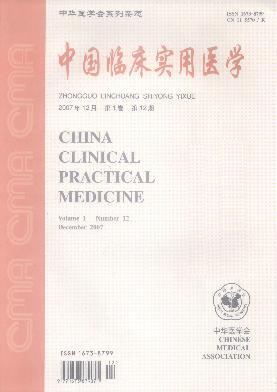Transradial coronary intervention of chronic total occlusion lesion 82 clinical research
引用次数: 0
Abstract
Objective To evaluate percutaneous coronary intervention(PCI) on coronary chronic total occlusion(CTO) lesions safety, clinical effectiveness, compared PCI and simple drug treatment of chronic coronary occlusion in patients with long - term prognosis. Methods From February 2008 to February 2010 Shangqiu City Department of Cardiology, First People' s Hospital, 82 cases of hospitalized patients, a total of 116 lesions after radial artery CTO intervention information. Test group: PCI group 50 cases of 67 lesions treated by interventional occlusion of blood vessels open. Drug treatment group :32 patients with 49 lesions due to surgery or surgery was not successful line of PCI given drug treatment alone. Analysis of the clinical symptoms of the two groups, the incidence of major complications; two groups of clinical follow - up 6 months follow - up cases were compared clinical end point event rate; review echocardiography and cardiac function and wall observed movement. Results 116 CTO lesions, 67 lesions after successful opening of the radial artery, 49 lesions could not open, the success rate of 57.8%. The two groups no significant difference in clinical characteristics. Forearm,3 cases of postoperative hematoma, no pulse disease 0, no other serious complications. Operation group with unstable angina, myocardial infarction and mortality were again lower than drug treatment group (P< 0. 05),echocardiography showed cardiac surgery group and wall motion was better than drug treatment group (P <0. 05). Conclusion The radial artery is safe and feasible intervention CTO lesions, a high success rate, no serious complications and chronic coronary occlusion may improve long - term prognosis of patients, improving quality of life and reduce mortality. Key words: Transradial intervention; Sirolimus-eluting stent; Chronic occlusive disease; Drug therapy经桡动脉冠状动脉介入治疗慢性全闭塞病变82例临床研究
目的评价经皮冠状动脉介入治疗(PCI)对冠状动脉慢性全闭塞(CTO)病变的安全性、临床疗效,比较PCI与单纯药物治疗对慢性冠状动脉闭塞患者的远期预后。方法2008年2月至2010年2月商丘市第一人民医院心内科收治82例住院患者,共116例病变桡动脉CTO介入信息。试验组:PCI组50例67处病变行介入闭塞血管开放治疗。药物治疗组:32例患者49例因手术或手术未成功行PCI行药物治疗。分析两组临床症状、主要并发症的发生情况;两组临床随访6个月的病例比较临床终点事件发生率;回顾超声心动图和心功能及观察壁运动。结果CTO病变116例,桡动脉成功打开67例,不能打开49例,成功率57.8%。两组临床特征无显著差异。前臂术后血肿3例,无脉搏病0例,无其他严重并发症。手术组不稳定型心绞痛、心肌梗死及死亡率均低于药物治疗组(P< 0.05)。P < 0.05),超声心动图显示心脏手术组和壁运动优于药物治疗组(P < 0.05)。05). 结论桡动脉介入CTO病变安全可行,成功率高,无严重并发症及慢性冠状动脉闭塞可改善患者长期预后,提高生活质量,降低病死率。关键词:经桡动脉介入治疗;析支架;慢性闭塞性疾病;药物治疗
本文章由计算机程序翻译,如有差异,请以英文原文为准。
求助全文
约1分钟内获得全文
求助全文

 求助内容:
求助内容: 应助结果提醒方式:
应助结果提醒方式:


